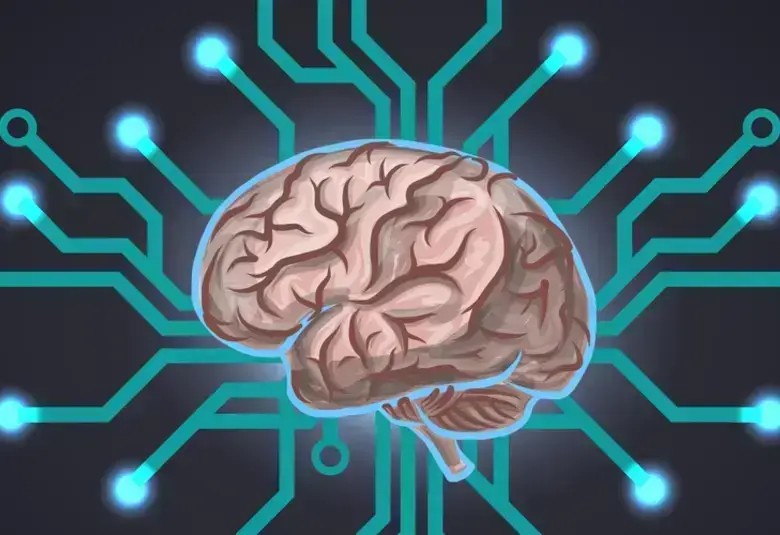Both mitochondrial and lysosomal function decrease with age, which is the major risk factor for PD, and are impaired by gene mutations linked to the disease. Mitochondrial and lysosomal pathways are important and interconnected in pathogenesis. Both encompass the inflammatory factors, calcium dysregulation and excess free radicals that may also be involved.
미토콘드리아 및 리소좀의 기능은 PD의 주요 위험인자인 연령이 높아질수록 감소하고, PD와 연관된 유전자 돌연변이에 의해 손상됩니다. 미토콘드리아와 리소좀 경로는 중요하며 발병과정에서 서로 관련이 있습니다. 두 경로 모두 발병에 수반될 수 있는 염증 인자들과 칼슘 조절장애 및 활성산소(free radicals)의 과잉 생성에 관여합니다.
From an early stage, mitochondria were suggested as an important factor in causing Parkinson’s Disease (PD), and this was at least in part validated by the MPTP story. The Complex 1 component of the mitochondrial respiratory chain is inhibited by an oxidation product of MPTP; and this inhibition leads to the death of dopaminergic neurons.
초기 단계부터, 미토콘드리아는 파킨슨병(PD)의 발병에 있어 중요한 인자로 제시되었으며, 이는 MPTP 스토리에 의해 부분적으로 검증되었습니다. 미토콘드리아 호흡사슬(respiratory chain)의 Complex 1 구성요소는 MPTP의 산화생성물에 의해 억제되며, 이러한 억제작용은 도파민성 뉴런의 사멸을 유발합니다.
Exposure to certain pesticides has a similar effect. And, although we have not identified any single environmental agent as a prime contributor to PD (as distinct from Parkinsonism), pesticides cannot escape the cloud of suspicion.1
특정 살충제에 노출되는 경우에도 비슷한 작용이 나타납니다. 아직 PD(파킨슨증과는 별개임§)의 일차적 원인이라고 할 만한 단일한 환경적 동인은 확인되지 못했지만, 그렇다고 살충제에 대한 의혹을 떨칠 수는 없습니다.1
Most PD patients are similar in their core clinical features, which arise from the basal ganglia where cell death begins, but are otherwise heterogeneous – clinically, and probably also genetically. Free radical excess, inflammatory processes, calcium dysregulation, protein aggregation -- all have been suggested as important elements within the disease pathways involved. But these factors are interconnected, believes Anthony Schapira, of the Institute of Neurology, University College London. For example, mitochrondria are a major source of free radicals.
많은 PD 환자들은 임상적으로 중요한 특징들을 유사하게 보이는데, 이는 기저핵의 세포가 사멸하면서 발생한 결과입니다. PD 환자들이 보이는 다른 증상들은 임상적으로도 유전적으로도 다양한 원인에 의해 발생합니다. 활성산소 과잉, 염증 과정, 칼슘 조절장애, 단백질 응집 등은 모두가 파킨슨병을 일으키는 과정에 중요한 영향을 미치는 요소로 제시되었습니다. 하지만, 유니버시티 칼리지 런던(University College London) 신경학연구소의 Anthony Schapira는 이러한 요인들을 서로 연관되어 있는 것으로 바라보고 있습니다. 예컨대, 미토콘드리아가 활성산소의 주된 발생원인인 것처럼 말입니다.
It is often difficult to distinguish between primary and secondary effects; and the picture is one of complex pathways interacting over time, Professor Schapira continued, speaking at the London event James Parkinson – An Essay on the Shaking Palsy 1817: A Celebration of 200 Years of Progress, organised by the International Parkinson and Movement Disorder Society.
국제 파킨슨병 및 운동장애 학회(International Parkinson and Movement Disorder Society)가 주최한 런던 학술대회에서† Schapira 교수는 파킨슨병에 대한 일차적 영향과 이차적 영향을 구분하는 것은 종종 어렵고, 그 상태가 지속적으로 상호작용을 하는 복잡한 경로들 중 하나라고 말했습니다.
Overall, genetics probably accounts for about 15% of PD – but for a far greater percentage in certain populations such as the Ashkenazi Jewish community, where it is thought that gene mutations are responsible for around 50% of the disease. Kindred studies have shown that rare cases of PD are monogenetic. Others show more complicated gene linkage. But genetics has given us vital insights into relevant pathways.
전반적으로 PD 중 약 15%는 대개 유전적 요인에서 기인하지만, 유전자 돌연변이가 PD의 약 50%를 차지하는 원인으로 생각되는 아슈케나지 유대인(Ashkenazi Jewish) 과 같은 특정 집단들에서는 유전적 요인에 의해 PD가 발생하는 비율이 훨씬 더 큽니다. Kindred 연구들은 유전자 하나 때문에 PD가 발병한 사례는 매우 드물다는 것을 보여주었습니다. 다른 연구들은 보다 복잡한 유전자 연관성을 보여주고 있습니다. 그러나 유전학을 통해 우리는 관련 경로에 대한 중요한 식견을 얻을 수 있었습니다.
The many causes of cell death
세포사멸을 일으키는 여러 가지 원인들
Twenty years ago, alpha-synuclein was identified as a genetic cause: PARK1 was a game-changer. Of the genes we now know are implicated in PD, four (Parkin, PINK1, DJ1 and FBOX7) are involved in mitochondrial turnover, ie the labelling of damaged mitochondria for lysosomal destruction. If gene mutations interfere with turnover, sick mitochondria accumulate -- which damages the cell.
20년 전, 알파-시누클레인(alpha-synuclein)이 PD를 일으키는 유전적 원인으로 밝혀졌고, PARK 1은 획기적인 변화를 가져왔습니다. 우리가 PD에 관련되어 있는 것으로 알고 있는 유전자들 중 네 개 (Parkin, PINK1, DJ1, FBOX7)는 미토콘드리아 턴오버(turnover), 즉 손상된 미토콘드리아가 리소좀에서 파괴되도록 하는 데 관여합니다. 유전자 돌연변이로 인해 이 턴오버가 방해를 받으면, 비정상적인 미토콘드리아가 축적되어 해당 세포를 손상시킵니다.
Next in likely importance is the lysosomal autophagy pathway.2 Numerically, homozygous and heterozygous mutations in the glucocerebrosidase beta acid (GBA) gene are the biggest genetic risk factor for PD. In the UK, it is reported that 12% of PD patients have a GBA mutation, and that is probably an underestimate.
다음으로 중요하다고 예상되는 것은 리소좀 자가포식(autophagy) 경로입니다.2 수치상, 글루코세레브로시다제 베타 에시드(GBA: glucocerebrosidase beta acid) 유전자에서 동종접합 및 이종접합 돌연변이는 PD의 가장 큰 유전적 위험인자입니다. 영국에서는 PD 환자들 중 12%가 GBA 돌연변이를 가지고 있는 것으로 보고되었는데, 이 수치는 실제보다 과소 평가되었을 수 있습니다.
Such mutations decrease activity of the enzyme, and the substantia nigra is the area most severely affected. Also of interest is the fact that even in PD patients without GBA mutations, there is still a deficit in substantia nigra GBA activity.
그러한 돌연변이는 효소의 활성을 저하시키는데, 흑질(substantia nigra)에 가장 큰 영향을 줍니다. 또한 흥미로운 사실은 GBA 돌연변이가 없는 PD 환자들도 여전히 흑질 GBA 활성이 결핍되어 있다는 점입니다.
GBA deficiency impairs the autophagy-lysosome pathway and so the disposal of damaged organelles and the handling of macromolecules such as alpha-synuclein, which constitutes the largest component of Lewy bodies.
GBA 결핍은 자가포식-리소좀 경로를 손상시키므로, 손상된 세포기관의 제거 및 루이소체의 가장 큰 부분을 구성하는 알파-시누클레인과 같은 거대분자의 처리에 악영향을 미칩니다.
It is indeed intriguing that the most important pathway for degradation of alpha-synuclein is through the lysosome. But alpha-synuclein inhibits mitochrondrial function and mitochondrial dysfunction leads to dysregulation of cellular calcium which, in turn, affects dopamine. Neuroinflammation also contributes to mitochondrial damage. So we have an overlap between many relevant pathways.
알파-시누클레인의 분해에 가장 중요한 경로가 리소좀이라는 것도 매우 흥미로운 점입니다. 하지만 알파-시누클레인은 미토콘드리아의 기능을 저해하고, 미토콘드리아의 기능장애는 세포 칼슘의 조절장애로 이어져, 결과적으로 도파민에 영향을 미칩니다. 신경염증(neuroinflammation)도 미토콘드리아 손상의 원인으로 작용합니다. 따라서 파킨슨병이 발생하는 데 관여하는 여러 경로들을 함께 고려해야 합니다.
The question now is whether we can use this understanding to identify targets and develop therapies. Much attention has been focused on the GBA gene.
이제 이러한 이해를 통해 치료대상을 파악하고 치료법을 개발할 수 있는지를 물을 차례입니다. 지금까지는 많은 관심이 GBA 유전자에 집중되었습니다.
Self-amplifying relationship between alpha-synuclein and glucocerebrosidase (GC-ase)
알파-시누클레인과 글루코세레브로시다제(GC-ase) 간의 자가증폭적 관계
In GBA knock-out mice, levels of alpha-synuclein increase. Use of a GC-ase inhibitor raises levels of alpha-synuclein; and more alpha-synuclein decreases GC-ase activity.
GBA를 제거한 쥐에서는 알파-시누클레인의 농도가 증가합니다. 글루코세레브로시다제(GC-ase, glucocerebrosidase) 억제제를 사용하면 알파-시누클레인 농도를 증가시킬 수 있으며, 알파-시누클레인이 많아지면 GC-ase 활성은 감소합니다.
There are now suggestions that increasing levels of GC-ase may decrease levels of alpha-synuclein. One approach is to use drugs that act as GBA chaperones, allowing the mutated protein to be unfolded in readiness for action.3 In principle, increasing GC-ase activity could interfere with several cell death pathways, improving both lysosomal and mitochondrial function, and decreasing the spread of neurodegeneration – if this is indeed caused by alpha-synuclein.
지금은 GC-ase의 농도를 증가시키면 알파-시누클레인의 농도가 감소할 수 있을 것이라는 의견이 있습니다. 한 가지 접근방법은 GBA 샤프론(chaperones)으로 작용하는 약물을 사용하여 변이된 단백질을 펼쳐서 활동 준비가 된 상태로 만들어주는 것입니다.3 원론적으로, GC-ase 활성을 증가시키면 일부 세포사멸 경로도 영향을 받아 리소좀 기능과 미토콘드리아의 기능이 모두 개선될 수 있고, 실제로 알파-시누클레인에 의해 야기된 신경퇴화(neurodegeneration)의 확산도 감소시킬 수 있습니다.
Study of the many causes of cell death is of prime importance in understanding the nature of the disease. But many pathways – both genetic and environmental -- converge on mitochondrial quality control.4
세포사멸의 여러 원인들에 대한 연구는 파킨슨병의 본질을 이해하는 데 있어 매우 중요합니다. 그러나 많은 경로들(유전적 경로와 환경적 경로 모두)이 미토콘드리아의 질적 관리에 치중되어 있습니다.4
저희 담당자는 과학적 근거를 토대로 심포지엄의 주요 자료를 선정합니다. 본 페이지의 의견이 반드시 룬드벡의 의견을 반영하지는 않습니다.




